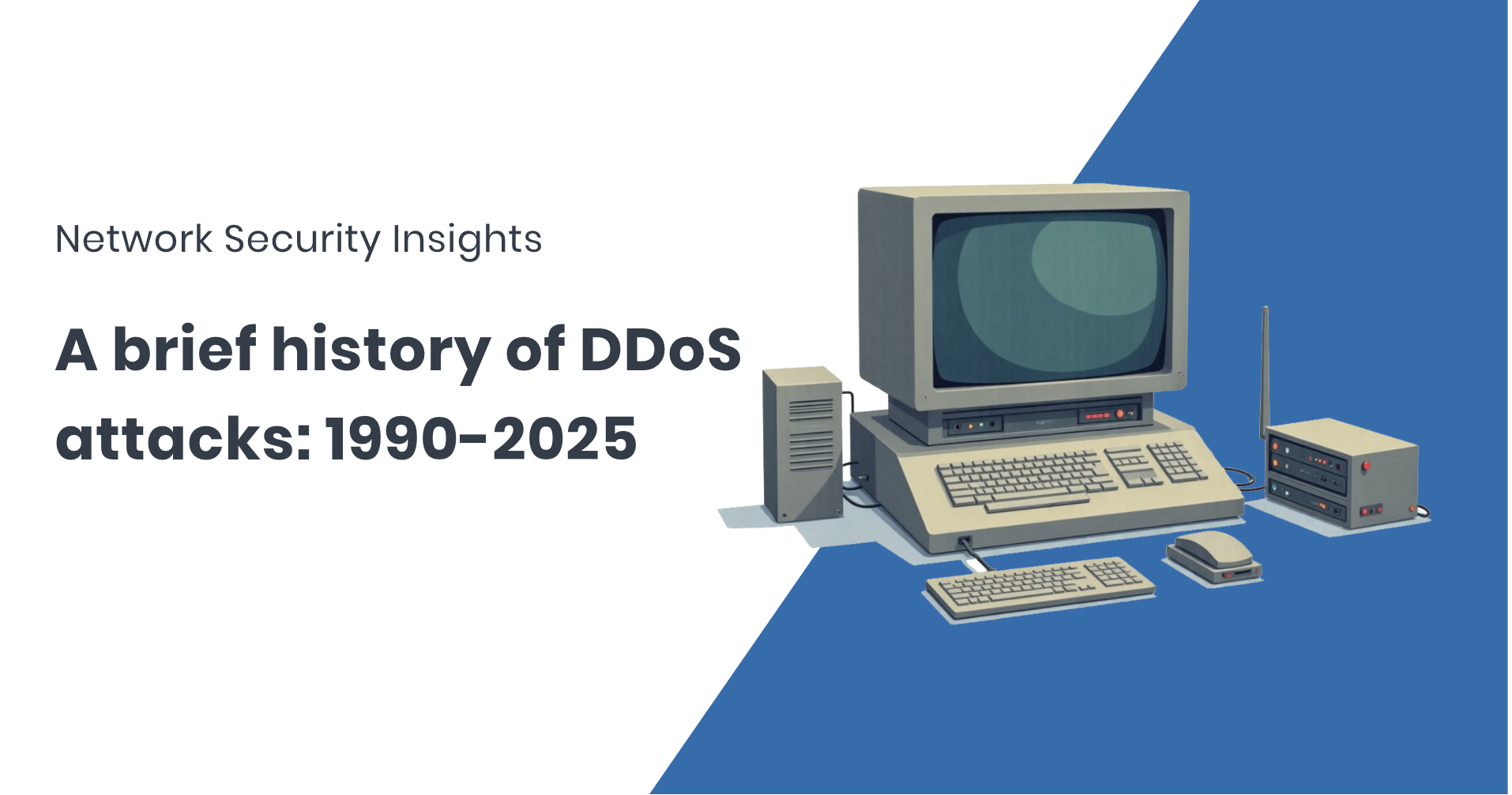
Evolution of DDoS: From single PCs to Terabit floods
Twenty‑five years ago a teenager with a dial‑up modem discovered he could knock Yahoo! offline by hammering it with junk traffic. Since then denial‑of‑service attacks have morphed into a multi‑billion‑pound headache that can rattle entire countries. Let’s trace that journey, chapter by chapter, to see how a nuisance became an industry—and what defenders have learned along the way.
When did denial‑of‑service attacks start?
Late‑1990s security mailing lists carried warnings about tools named Trinoo and Tribal Flood Network. They were simple scripts: compromise a handful of Unix boxes, point them at a victim, and watch the website vanish. The motive was bragging rights, nothing more sophisticated than pulling the plug on your mate’s games console.
How did worms and cheap bandwidth change the game?
Broadband replaced dial‑up in the early 2000s. Suddenly home users had megabits of upload capacity. At the same time worms such as Code Red and SQL Slammer spread autonomously, clogging networks and proving that you didn’t need an army of volunteers; malware could build one for you. Attack peaks jumped from kilobits to tens of gigabits per second.
Why did DDoS‑as‑a‑Service take off?
By 2006 underground forums began selling ‘IP stress tests’ for £10 a go. You paid in PayPal or bitcoin, picked a target, and the service did the damage. Reflection tricks, sending a small query to a public DNS or NTP server that bounced back a much larger reply, meant sellers could promise bigger floods without owning bigger botnets. And DDoS‑as‑a‑Service was born.
What made Mirai a turning point?
The Mirai malware swept through cheap internet cameras and routers in September 2016. Within weeks an estimated half‑million devices were under its control. One terabit‑per‑second blast at a major DNS provider took Spotify, Reddit and Twitter offline for hours. The message was clear: insecure IoT hardware had become a ready‑made army for hire.
Where are we today?
Cloud providers now report blocking attacks above 3 Tbps. Techniques grow ever more creative:
- Flash floods – huge bursts lasting under ten minutes, hoping to outrun manual response.
- Carpet‑bombing – small packets sprayed across every IP in a subnet, hiding the real target.
- Multi‑vector shifts – switching protocols mid‑attack to dodge filters.
Motives have widened too. Extortion letters demand bitcoin or services stay dark. Hacktivist collectives aim at banks and media outlets to push political messages. Some groups even sell ‘protest packages’ to anyone with a grievance and a wallet.
How do defenders keep up with DDoS attacks?
Experience shows that speed matters more than scale. Modern playbooks focus on:
Instant visibility – flow telemetry or packet sampling flags an anomaly within seconds.
Automation – RTBH or Flow Spec routes bad traffic into a digital bin before links fill up.
Cloud scrubbing – always‑on or on‑demand cleaning centres soak up multi‑terabit streams.
Layered controls – rate limits, anycast DNS and application firewalls filter what slips through.
Response time matters: industry studies show the average attack in 2024 lasted under five minutes. Manual action is rarely quick enough.
What might happen in the future?
AI‑guided botnets could analyse defences in real time and pivot faster than humans can click.
Faster home links—fibre and 5G—hand attackers more raw ammunition.
Tighter IoT rules may slow botnet growth, but billions of legacy gadgets will stay online for years.
DDoS history mirrors the internet’s own: more users, more bandwidth, more automation, both good and bad. Understanding that timeline helps organisations plan for what’s next: not whether attacks will hit, but how quickly they can spot and stop them.
About FastNetMon
FastNetMon is a leading solution for network security, offering advanced DDoS detection and mitigation. With real-time analytics and rapid response capabilities, FastNetMon helps organisations protect their infrastructure from evolving cyber threats.
For more information, visit https://fastnetmon.com